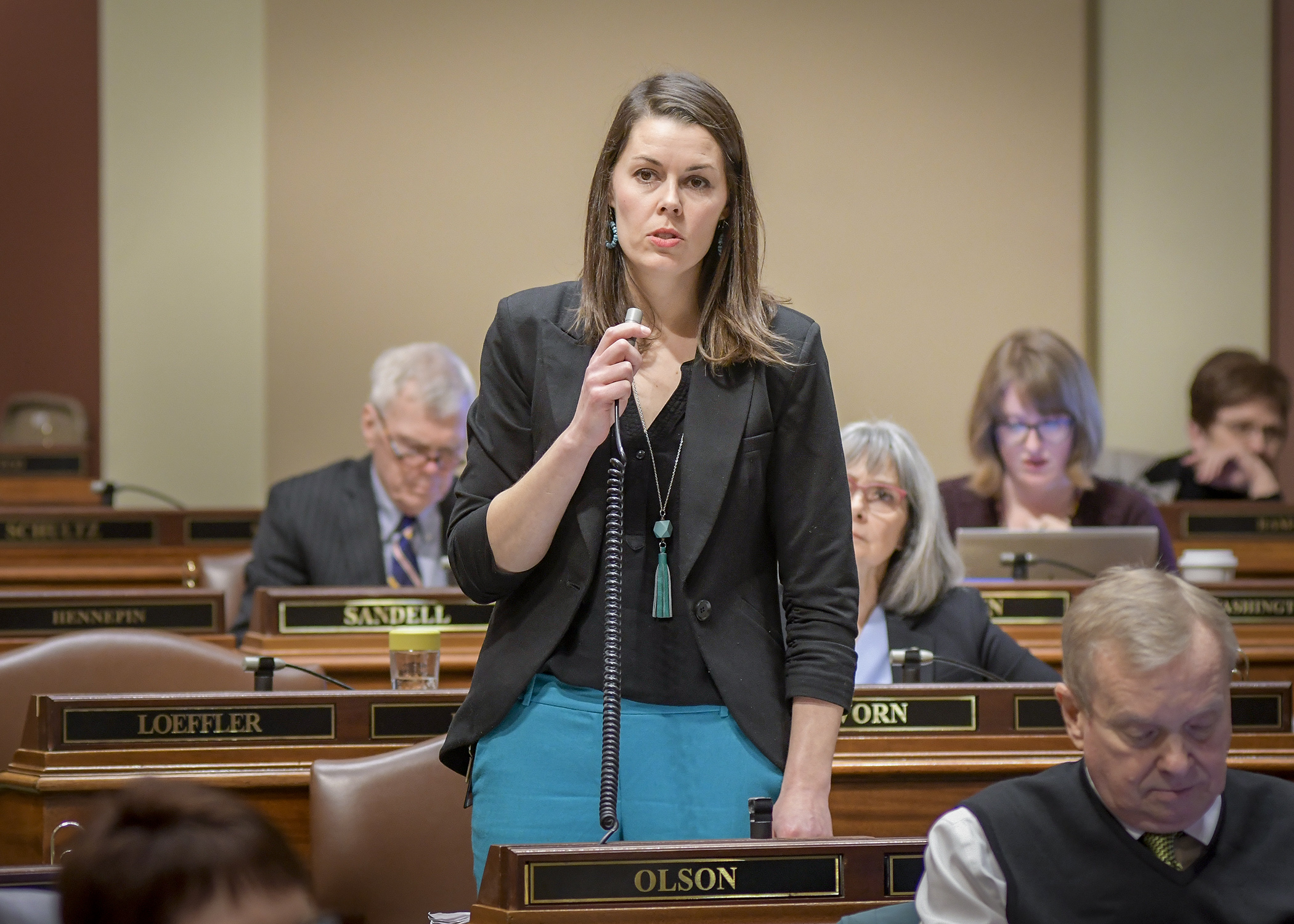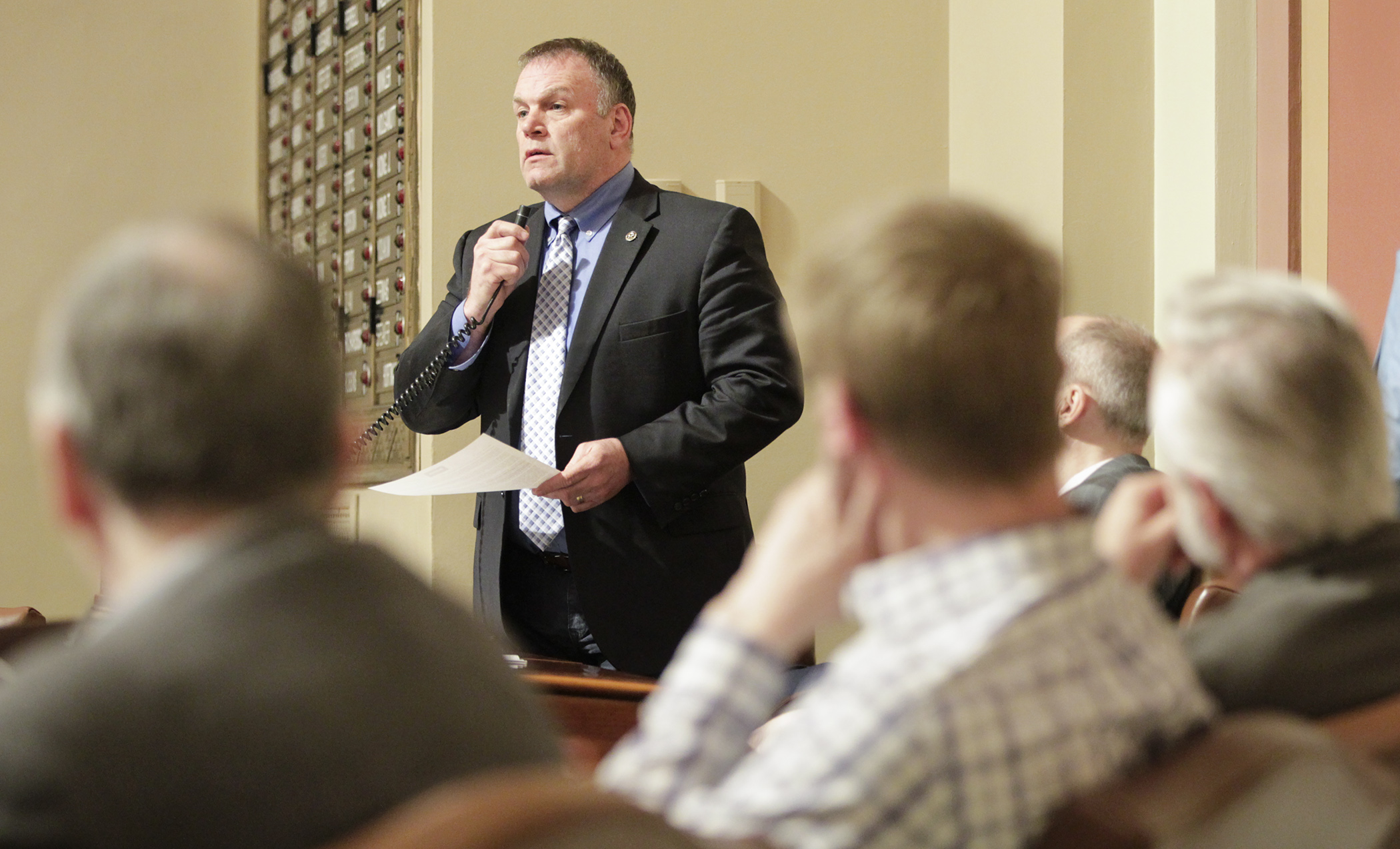House passes sweeping opioid legislation with contentious funding mechanism

Ideas intended to address Minnesota’s opioid crisis, immediately and into the future, received strong House support Monday night.
Sponsored by Rep. Liz Olson (DFL-Duluth), HF400, as amended, features a wide range of measures to address an issue that led many members — on both sides of the aisle — to speak during the four-hour discussion about their personal experiences with the opioid epidemic and their support for a broad, multi-faceted approach.
Passed 94-34, the bill now goes to the Senate, where there is no direct companion.
“We are in the midst of an opioid addiction crisis,” Olson said. “Parents have lost children. Teachers have lost students … no other family deserves to go through this.”
[WATCH — Full video of floor debate on the bill]
A crisis decades in the making will also require “years of dedicated, ongoing revenue” to be adequately addressed, and that revenue should be provided by the industry responsible, not taxpayers, Olson said.
 Members listen as Rep. Dave Baker makes closing comments during floor debate on HF400, the so-called “opioid crisis bill” which would, in part, provide prevention and education initiatives to address opioid addiction. Photo by Paul Battaglia
Members listen as Rep. Dave Baker makes closing comments during floor debate on HF400, the so-called “opioid crisis bill” which would, in part, provide prevention and education initiatives to address opioid addiction. Photo by Paul BattagliaBut disagreements remain regarding bill’s proposed funding mechanism: registration fees, to be paid by pharmaceutical manufacturers and distributors and collected by the Board of Pharmacy.
Manufacturers’ fees would be required to total $12 million per year, while wholesalers’ fees would be required to equal $8 million. Each organization’s share of these amounts would be pro-rated and determined by its percentage of the overall sale and distribution of opioids in the state.
These funds would go into a designated account, which would also collect any money received through settlement or court orders related to opioid litigation.
This money would be allocated to address the opioid epidemic through programs focused on prevention and education as well as intervention, treatment, and recovery.
While enthusiastic about the initiatives supported by the bill, opponents expressed their belief that this funding structure would increase health care costs for people who legitimately need opioids for the management of severe pain and life-threatening conditions.
Other concerns expressed included the possible risk of litigation, which could jeopardize funding.
Several Republicans mentioned their willingness to support the bill if it was funded differently and expressed hope that a different source could be identified and agreed on during conference committee.
“This funding mechanism acts as a disincentive to drug manufacturers and distributors because their costs will skyrocket,” as the number of prescriptions issued fall in the state, said Rep. Nick Zerwas (R-Elk River).
Rep. Zack Stephenson (DFL-Coon Rapids) countered the state is already paying from the General Fund to address the opioid crisis, through the operation of jails and prisons, out-of-home child placements, and health costs.
“It’s about responsibility,” Rep. Laurie Halverson (DFL-Eagan) said. “We are asking for these companies that helped manufacture this crisis in our state, and around the country, and around the world, to be part of the solution.”
Floor amendments that were adopted would:
- make technical corrections;
- add a person suffering from severe and chronic pain to the advisory council;
- add an additional tribal member to the advisory council;
- clarify that people seeking opioids for palliative care would be protected by this bill; and
- require reporting from the Bureau of Criminal Apprehension, which would receive funding from the bill.
Amendments voted down include a few attempts to amend the bill with a sunset provision.
Related Articles
Search Session Daily
Advanced Search OptionsPriority Dailies
Ways and Means Committee OKs proposed $512 million supplemental budget on party-line vote
By Mike Cook Meeting more needs or fiscal irresponsibility is one way to sum up the differences among the two parties on a supplemental spending package a year after a $72 billion state budg...
Meeting more needs or fiscal irresponsibility is one way to sum up the differences among the two parties on a supplemental spending package a year after a $72 billion state budg...
Minnesota’s projected budget surplus balloons to $3.7 billion, but fiscal pressure still looms
By Rob Hubbard Just as Minnesota has experienced a warmer winter than usual, so has the state’s budget outlook warmed over the past few months.
On Thursday, Minnesota Management and Budget...
Just as Minnesota has experienced a warmer winter than usual, so has the state’s budget outlook warmed over the past few months.
On Thursday, Minnesota Management and Budget...